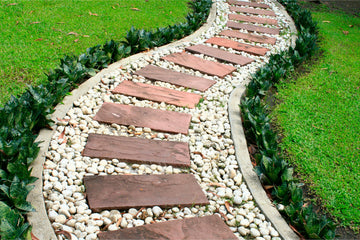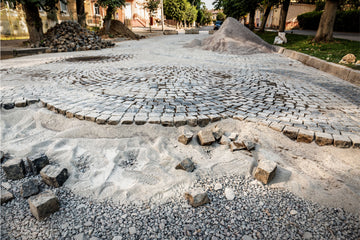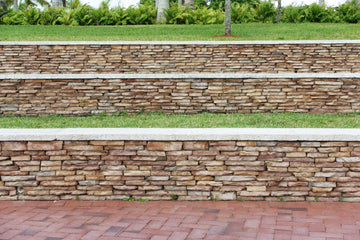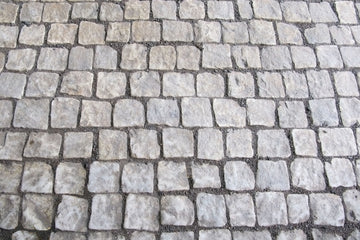Understanding Natural Stone Variations: Why No Two Pieces Are Identical

Natural stone variations remain one of the most distinctive characteristics that set authentic stone apart from manufactured alternatives. For landscape designers, garden architects, and stone suppliers worldwide, understanding these inherent variations is crucial for managing client expectations and delivering exceptional outdoor projects.
The Geological Foundation of Natural Stone Color Variation
Natural stone formation occurs over millions of years through intense geological processes involving heat, pressure, and mineral deposits. Each stone slab carries a unique geological fingerprint determined by the specific mineral composition present during its formation. Sandstone variations, limestone color differences, and granite patterns all originate from the particular blend of minerals, organic materials, and environmental conditions present in each quarry location.
The presence of iron oxide creates warm rust and red tones in natural sandstone, while manganese deposits produce purple and brown hues. Quartz content influences the lighter, cream-colored sections found throughout Indian sandstone paving. These mineral variations occur naturally within the same quarry bed, making absolute color uniformity impossible in authentic natural stone products.
Why Natural Stone Color Consistency Cannot Be Guaranteed
Unlike manufactured paving materials that follow controlled production processes, natural stone paving comes directly from quarry extraction. Each quarry layer contains different mineral concentrations, resulting in natural color variation between production batches. Stone suppliers and landscaping professionals must recognize that batch-to-batch variation represents authenticity rather than quality deficiency.
Sandstone paving extracted from upper quarry levels may display lighter tones due to weathering exposure, while deeper extraction levels reveal richer, more saturated colors. Limestone paving similarly demonstrates tonal shifts based on depth and location within the quarry formation. These natural variations create the authentic character that makes natural stone paving highly desirable for premium landscape projects.
Common Types of Natural Stone Variations
Color Variation in Natural Stone
Color variation represents the most visible difference in natural stone materials. Indian sandstone, one of the most popular natural paving options, exhibits significant color range even within designated color categories. Mint sandstone may include green, gray, and brown tones, while Raj Green sandstone combines green, brown, rust, and purple hues within single pallets.
Granite paving typically shows more color consistency than sandstone due to its formation process, yet still displays natural variation in crystalline patterns and mineral distribution. Limestone paving offers subtler color variation but demonstrates significant surface texture differences that affect visual appearance in completed installations.
Veining and Fossil Patterns
Natural stone veining creates linear patterns throughout stone slabs, resulting from mineral deposits that filled geological cracks during formation. These veining patterns appear randomly and cannot be controlled during quarry extraction. Limestone paving frequently displays fossil inclusions and shell fragments, adding unique character to each stone piece.
For commercial landscaping projects and residential garden designs, these natural markings provide authenticity and visual interest. Garden designers often highlight prominent veining as feature elements within natural stone patios and pathways rather than viewing them as imperfections.
Surface Texture Variation
Even when natural stone undergoes consistent processing, surface texture variation occurs due to the stone's natural structure. Riven finish sandstone reveals the stone's natural cleaving plane, creating texture differences across individual paving slabs. Natural stone with higher quartz content may display smoother areas, while sections with different mineral composition show more pronounced texture.
Managing Client Expectations for Natural Stone Projects
Sample Limitations
Stone samples provide general color guidance but cannot fully represent the complete variation range present in bulk shipments. Landscaping contractors and stone suppliers should present multiple samples showing the variation spectrum rather than single representative pieces. This approach establishes realistic expectations for natural stone paving projects from the initial specification stage.
Blending and Installation Techniques
Professional installers recommend drawing stone from multiple pallets simultaneously during installation to distribute color variation evenly across the project area. This blending technique prevents color clustering and creates harmonious visual flow throughout natural stone patios, driveways, and commercial plaza installations.
Photography and Digital Representation
Natural stone photography presents challenges due to lighting conditions affecting color perception. The same sandstone paving appears dramatically different under direct sunlight versus overcast conditions. Stone suppliers should provide multiple images showing various lighting scenarios to help landscape designers and contractors understand the complete color range.
The Value Proposition of Natural Stone Variation
Unique Aesthetic Character
Natural stone variations create one-of-a-kind outdoor spaces that manufactured products cannot replicate. High-end residential gardens, boutique hotel landscapes, and premium commercial developments benefit from the authentic character that natural color variation provides. Each natural stone installation becomes truly unique, adding exclusivity value to landscape projects.
Visual Depth and Interest
Color variation within natural stone paving creates visual depth that enhances spatial perception in landscape design. Monochromatic manufactured paving can appear flat and monotonous across large areas, while natural stone variation provides organic visual interest that complements plantings and architectural elements.
Aging and Weathering Benefits
Natural stone with inherent color variation ages more gracefully than uniform materials. As natural stone paving weathers, subtle color shifts blend with existing variation rather than creating stark contrast. Sealed or unsealed, natural stone develops character over time, with variations helping disguise minor weathering effects.
Technical Considerations for Stone Suppliers
Quality Control Parameters
Quality control for natural stone focuses on structural integrity, thickness consistency, and finish quality rather than absolute color matching. Stone suppliers should establish variation parameters during sample approval, documenting the acceptable color range with photographic evidence and physical samples.
Batch Documentation
Professional stone exporters maintain detailed batch documentation showing quarry location, extraction depth, and production timing. This information helps trace variation patterns and assists in future orders when clients seek similar material characteristics for project expansions or additional phases.
Communication Protocols
Clear communication between stone manufacturers, exporters, and international buyers prevents disputes regarding natural stone variation. Detailed product descriptions should explicitly state that color variation is inherent and expected, with sample approval processes acknowledging this fundamental characteristic.
Educating End Clients About Natural Stone Authenticity
Landscape designers and garden contractors serve as crucial educators, helping end clients understand that natural stone variation represents authenticity rather than quality compromise. Presenting variation as a premium feature rather than a limitation repositions client perception and increases appreciation for genuine natural materials.
Comparative presentations showing manufactured versus natural stone help clients understand the value distinction. Natural stone's unique character, formed over geological timescales, offers inherent value that uniform manufactured products cannot provide.
Conclusion
Natural stone variations embody the authentic geological processes that create these remarkable materials. For landscaping professionals, garden designers, and stone suppliers, understanding and communicating these inherent characteristics ensures successful project outcomes and satisfied clients. Rather than viewing variation as inconsistency, the industry should celebrate these differences as the hallmark of genuine natural stone.
By establishing clear expectations, implementing proper blending techniques, and educating clients about natural stone's geological origins, professionals can transform potential concerns into appreciation for truly unique outdoor spaces. Natural stone variation is not a defect - it's the signature of authenticity that makes each installation exceptional.






